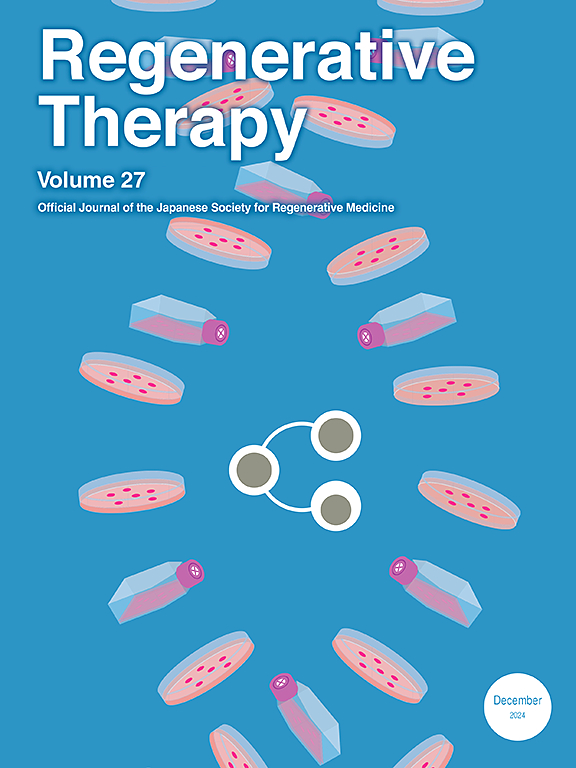Human placental extract improves liver cirrhosis in mice with regulation of macrophages and senescent cells
IF 3.4
3区 环境科学与生态学
Q3 CELL & TISSUE ENGINEERING
引用次数: 0
Abstract
Introduction
Cirrhosis is a disease with poor prognosis that requires the development of a novel therapeutic approach alternative to liver transplantation. In this study, we focused on the placenta and aimed to clarify the effects of human placental extract (HPE) on cirrhosis.
Methods
A mouse model of carbon tetrachloride-induced cirrhosis was used to evaluate the effect of HPE administration subcutaneously and compared with the control group (n = 8 for each group). In vitro and in vivo, real time-PCR and immunostaining were performed for HPE mechanistic analysis. Spatial transcriptomics was also performed for detailed analysis of the effect of HPE on cirrhosis.
Results
HPE administration improved serum ALT levels compared to control mice. Furthermore, there was a decrease in the number of senescent cells in the liver and the mRNA levels of secrete senescence-associated secretory phenotype factors and Cdkn2a (p16). In vitro, HPE induced macrophage polarization to the anti-inflammatory M2 phenotype. Spatial transcriptomics was also performed to analyze the underlying anti-inflammatory mechanism. The results showed that HPE strongly polarized macrophages to the M2 phenotype, especially in macrophage-rich regions in the liver. Gene expression pathway analysis using spatial transcriptomics also revealed the possibility of improving senescent cell-derived inflammation via mitochondrial function.
Conclusions
HPE improves serum ALT levels via anti-inflammatory mechanisms in macrophages and senescent cells. HPE serves as a novel agent for cirrhosis treatment.

人胎盘提取物通过调节巨噬细胞和衰老细胞改善小鼠肝硬化
肝硬化是一种预后不良的疾病,需要开发一种新的治疗方法来替代肝移植。在这项研究中,我们将重点放在胎盘上,旨在阐明人胎盘提取物(HPE)对肝硬化的影响。方法采用小鼠四氯化碳肝硬化模型,观察HPE皮下给药的效果,并与对照组比较(每组8例)。体外和体内采用real - time-PCR和免疫染色进行HPE机制分析。空间转录组学也用于详细分析HPE对肝硬化的影响。结果与对照组相比,shpe可提高血清ALT水平。此外,肝脏中衰老细胞的数量减少,分泌衰老相关的分泌表型因子和Cdkn2a的mRNA水平下降(p16)。在体外,HPE诱导巨噬细胞极化至抗炎M2表型。空间转录组学也用于分析潜在的抗炎机制。结果表明,HPE强烈极化巨噬细胞至M2表型,特别是在肝脏巨噬细胞富集区域。利用空间转录组学的基因表达途径分析也揭示了通过线粒体功能改善衰老细胞源性炎症的可能性。结论shpe通过抗炎机制提高巨噬细胞和衰老细胞血清ALT水平。HPE作为一种新的肝硬化治疗药物。
本文章由计算机程序翻译,如有差异,请以英文原文为准。
求助全文
约1分钟内获得全文
求助全文
来源期刊

Regenerative Therapy
Engineering-Biomedical Engineering
CiteScore
6.00
自引率
2.30%
发文量
106
审稿时长
49 days
期刊介绍:
Regenerative Therapy is the official peer-reviewed online journal of the Japanese Society for Regenerative Medicine.
Regenerative Therapy is a multidisciplinary journal that publishes original articles and reviews of basic research, clinical translation, industrial development, and regulatory issues focusing on stem cell biology, tissue engineering, and regenerative medicine.
 求助内容:
求助内容: 应助结果提醒方式:
应助结果提醒方式:


